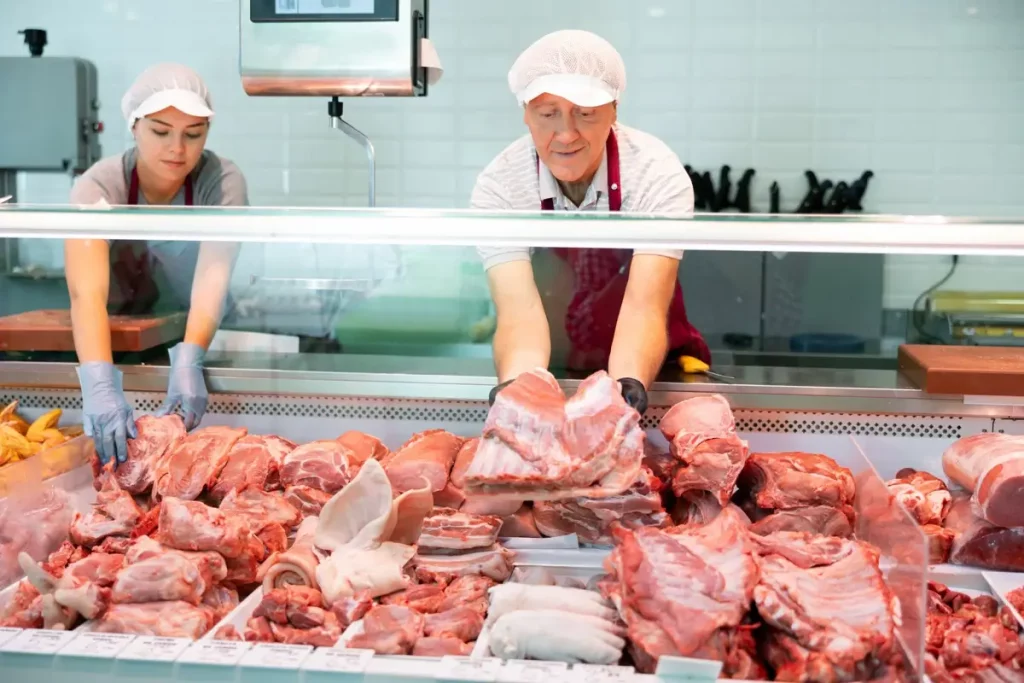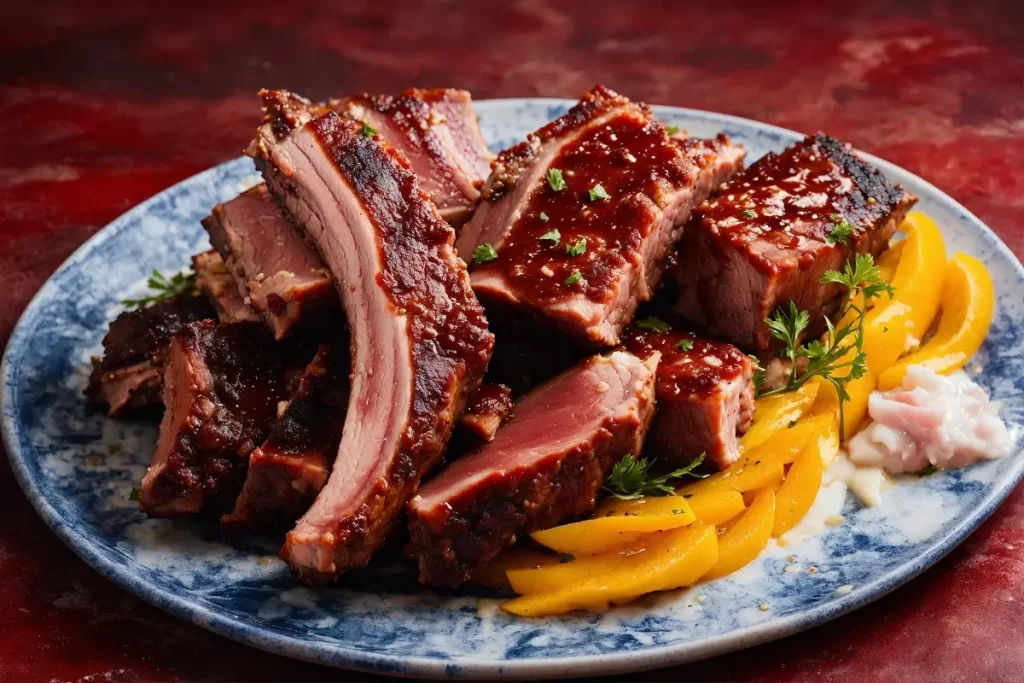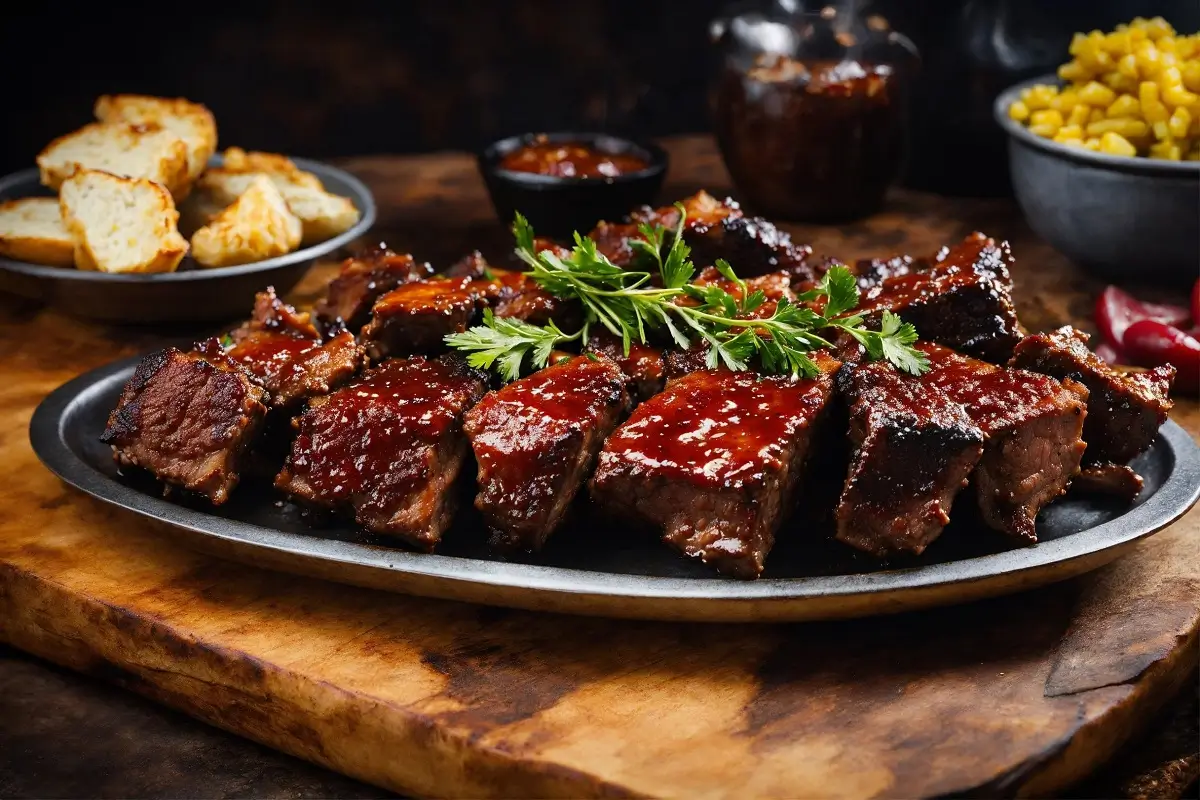Introduction to Rib Tips
Ah, rib tips! These succulent, flavor-packed morsels have been tantalizing taste buds for ages. Indeed, they’re not just a dish; they’re a culinary experience. Rib tips, often overshadowed by their more famous counterparts like baby back ribs or spare ribs, deserve their spotlight. Surprisingly, many folks remain unaware of what exactly rib tips are. So, let’s dive in!
Rib tips are the small, meaty sections cut from the lower end of the spare ribs. These bits contain a mix of meat and cartilage, offering a unique texture that’s both chewy and tender. Historically, rib tips have roots in various cuisines, particularly in regions where maximizing the use of every part of the animal was essential. Moreover, they’ve gained significant popularity in barbecue cultures, especially within the Southern United States, where they’re often slow-cooked to perfection.
Furthermore, rib tips aren’t just about taste. They’re a testament to the art of cooking, showcasing how less popular cuts can be transformed into delectable dishes. In essence, they embody the philosophy of ‘waste not, want not,’ turning what might be considered scraps into a culinary delicacy.

Selecting the Best Rib Tips
Choosing the right rib tips is crucial for a mouth-watering dish. Firstly, when you’re on the hunt for the perfect rib tips, look for an even distribution of meat across the bones. This ensures that each bite is as satisfying as the last. Additionally, the type of ribs you select makes a significant difference. While there are various options, baby back ribs and St. Louis style ribs are popular choices. Baby back ribs are known for their tenderness and excellent marbling, which translates to more flavor and juiciness.
Moreover, it’s essential to consider the meat’s quality. Freshness is key, so always opt for rib tips that look moist and have a vibrant color. Avoid those that appear dry or discolored, as this can be a sign of poor quality or age. Equally important is the fat content. Good marbling (the white streaks of fat within the meat) is a sign of flavor and tenderness. However, too much fat can overwhelm the dish, so look for a balance.
In summary, selecting the best rib tips involves a keen eye for quality, freshness, and the right balance of meat and fat. Remember, the better the quality of your rib tips, the more delicious your final dish will be. So, take your time at the butcher’s counter, and don’t hesitate to ask for recommendations. After all, the perfect rib tips are the foundation of a truly memorable meal.
Preparation Techniques
Now, let’s talk about preparing your rib tips for cooking. This step is just as crucial as selecting the right meat. Firstly, cleaning and trimming your rib tips is essential. Rinse them under cold water and pat dry with paper towels. Then, trim off any excess fat to ensure even cooking and better flavor absorption.
One key step in the preparation process is removing the membrane. This thin, tough layer sits on the underside of the ribs and can be a bit tricky to remove. However, it’s worth the effort. Removing the membrane allows the flavors of your marinades and rubs to penetrate the meat more effectively. To do this, gently slide a knife under the membrane at one end of the ribs and lift. Once you’ve got a good grip, use a paper towel for better traction and pull the membrane off in one piece.
Additionally, scoring the meat can also enhance flavor absorption. Make shallow cuts across the rib tips, which will allow your marinades and rubs to seep deeper into the meat.
In essence, proper preparation of rib tips sets the stage for a flavorful and enjoyable eating experience. So, take your time with these steps, as they are pivotal in transforming your rib tips from good to great. Remember, good cooking is as much about the preparation as it is about the actual cooking.
Marinades and Rubs
Now, let’s spice things up with marinades and rubs! Indeed, the choice between a marinade and a rub can significantly influence the flavor profile of your rib tips. Firstly, marinades are liquid mixtures that often include acids like vinegar or citrus juice, which tenderize the meat while infusing it with flavors. For instance, a classic barbecue marinade might combine vinegar, brown sugar, garlic, and a blend of spices.
On the other hand, dry rubs are mixtures of herbs and spices applied directly to the meat. They create a flavorful crust that enhances the rib tips’ natural taste. A typical rub might include paprika, brown sugar, garlic powder, salt, and pepper. Interestingly, the choice between a marinade and a rub can depend on personal preference and the desired result. While marinades can impart more moisture and tenderness, rubs offer a more intense flavor and textural contrast.
Moreover, don’t be afraid to experiment with different combinations of herbs and spices. After all, the beauty of cooking lies in personalization and creativity. Whether you opt for a zesty marinade or a bold rub, ensure that your rib tips are thoroughly coated and allowed to rest for a few hours, or even overnight, for maximum flavor absorption.

Cooking Methods
Moving on to the pivotal aspect of cooking: the method you choose is crucial. Smoking is a favorite among BBQ enthusiasts, known for imparting a deep, rich flavor. The key here is a low and slow approach, allowing the smoke to tenderize and flavor the meat over several hours. Patience is essential in this process, as extended smoking leads to more tender and flavorful results.
Grilling offers a quicker alternative, ideal for those seeking a charred exterior while retaining a juicy interior. High heat and swift cooking are typical of this method. It’s important to monitor the meat closely to avoid burning and flip it regularly for even cooking.
Oven baking is another viable option, particularly for its convenience. Season the meat and let it cook slowly in a preheated oven. This less labor-intensive method can yield equally satisfying results.
Lastly, consider the stovetop for braising in a flavorful liquid. This technique is excellent for achieving fall-off-the-bone tenderness, making the meat exceptionally moist and tender.
Explore various cooking methods like smoking, grilling, or oven baking to find what works best for your rib tips. For additional cooking techniques, our guide on Pulled Pork Tacos offers valuable insights.
Keeping Rib Tips Moist and Flavorful
Focusing on a crucial aspect of cooking this BBQ favorite: maintaining moisture and flavor is essential. Dryness can be a letdown, but there are several techniques to prevent this, regardless of the cooking method.
One effective approach is mopping or spritzing during the cooking process. Mopping involves applying a liquid sauce or marinade at intervals, not only adding moisture but also enhancing the flavor. A typical mop sauce might include cider vinegar, beer, or butter. Alternatively, spritzing with a mixture of apple cider vinegar or fruit juice can also help keep the meat moist and infuse a subtle flavor.
It’s also crucial to avoid overcooking. Overdone meat can become dry and tough, so careful monitoring of temperature and cooking time is key. The ideal result is meat that’s tender and juicy, with a slight chew.
Another technique is wrapping the meat in foil during part of the cooking, especially when smoking. This method allows the meat to braise in its juices, yielding incredibly tender and flavorful results.
The Art of Saucing
Now, let’s delve into the art of saucing, a pivotal step in achieving the perfect rib tips. Firstly, the timing of sauce application is crucial. Typically, you should apply the sauce towards the end of the cooking process. This is because most BBQ sauces contain sugar, which can burn if exposed to high heat for too long, resulting in a bitter taste.
Moreover, the choice of sauce can dramatically influence the flavor profile of your rib tips. Whether you prefer a classic, sweet BBQ sauce, a tangy vinegar-based one, or a spicy concoction, the sauce should complement the natural flavors of the meat. Interestingly, experimenting with different sauces can lead to exciting and delicious discoveries.
Applying the sauce should be done with care. Gently brush the sauce onto the rib tips, ensuring they are evenly coated. This not only adds flavor but also helps to create a beautifully caramelized exterior. Remember, the sauce is not just a flavor enhancer but also a finishing touch that can make your rib tips visually appealing.
Master the timing and application of sauce to elevate the taste of your rib tips. For sauce inspiration, our Bang Bang Sauce recipe can add a flavorful twist to your dish.
Resting and Serving
After cooking, don’t overlook the importance of resting your rib tips. This practice, favored by culinary experts and BBQ enthusiasts, is crucial for optimal flavor and texture. A rest period of 15-20 minutes allows the juices to redistribute, ensuring each bite is succulent and rich in taste.
When it comes to slicing, the technique matters. Cut against the grain for tenderness and ease of eating. Flipping the meat to slice from the bottom helps in even cutting, giving you a clear view of the bones.
The presentation is the final touch. Serve your rib tips with sides that complement the main dish, like coleslaw, cornbread, or grilled veggies. This not only enhances the visual appeal but also rounds out the meal, offering a feast for the eyes and the palate.
Allow your rib tips to rest before serving to ensure maximum flavor. For more on serving meats, check out our Pulled Pork Tacos guide.
FAQs
What are Rib Tips?
Rib tips are the small, meaty sections cut from the lower end of the spare ribs. They consist of a mix of meat and cartilage, offering a unique texture that’s both chewy and tender. Unlike the more commonly known rib types like baby back or St. Louis style, rib tips are considered a delicacy in certain cuisines, especially in Southern BBQ traditions. Essentially, they are the flavorful ends of the ribs that are often overlooked but pack a punch in terms of taste and texture.
How to Cook Rib Tips?
Preparing this cut involves a few key steps to ensure it’s both flavorful and tender. Start by cleaning, trimming, and removing the membrane from the meat. Next, decide whether to marinate or apply a dry rub for flavor infusion. When it comes to cooking, you have a variety of methods at your disposal, including smoking, grilling, oven baking, or stovetop braising. Each technique imparts a unique flavor and texture to the dish. For example, smoking enriches it with a deep, rich taste, while grilling achieves a charred and crispy exterior. Lastly, it’s important to allow the meat to rest before serving, ensuring the juices are evenly distributed.
What is the Difference Between Ribs and Rib Tips?
The main difference between ribs and rib tips lies in their location and size. Ribs refer to the larger, more uniform sections of meat and bone, such as baby back ribs or spare ribs. On the other hand, rib tips are the smaller, irregularly shaped pieces cut from the lower end of the spare ribs. While ribs are more widely known and used, rib tips are considered a special treat by many due to their rich flavor and texture, which comes from the combination of meat and cartilage.
Are Rib Tips the Same as Burnt Ends?
No, rib tips and burnt ends are not the same. Burnt ends originate from the point end of a brisket and are known for their slightly charred, crispy exterior and tender, juicy interior. Conversely, rib tips come from the ends of spare ribs and contain a mix of meat and cartilage. While both are considered BBQ delicacies and share a reputation for being incredibly flavorful, they are distinct cuts of meat with different textures and cooking methods.
- BBQ Sauce Recipes – “Explore Variety in BBQ Sauces”
- Meat Smoking Guide – “Mastering the Art of Smoking”
- Grilling Techniques – “Grilling Tips and Tricks”

